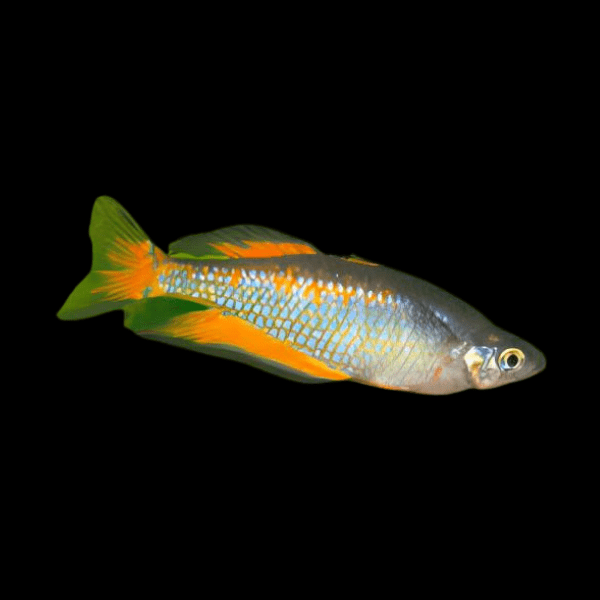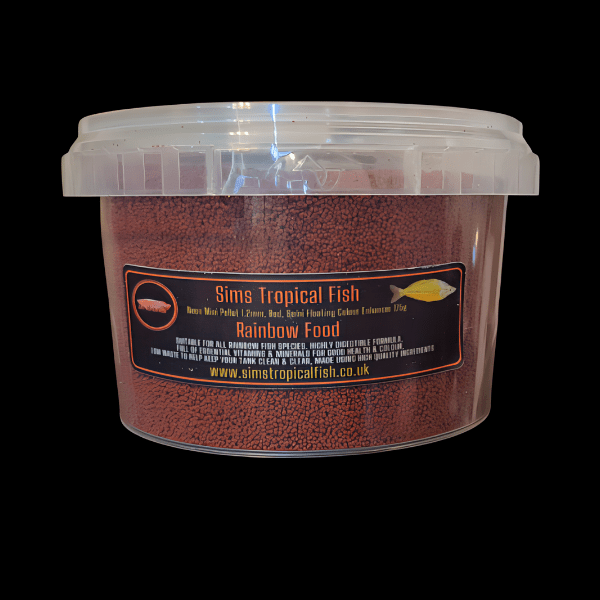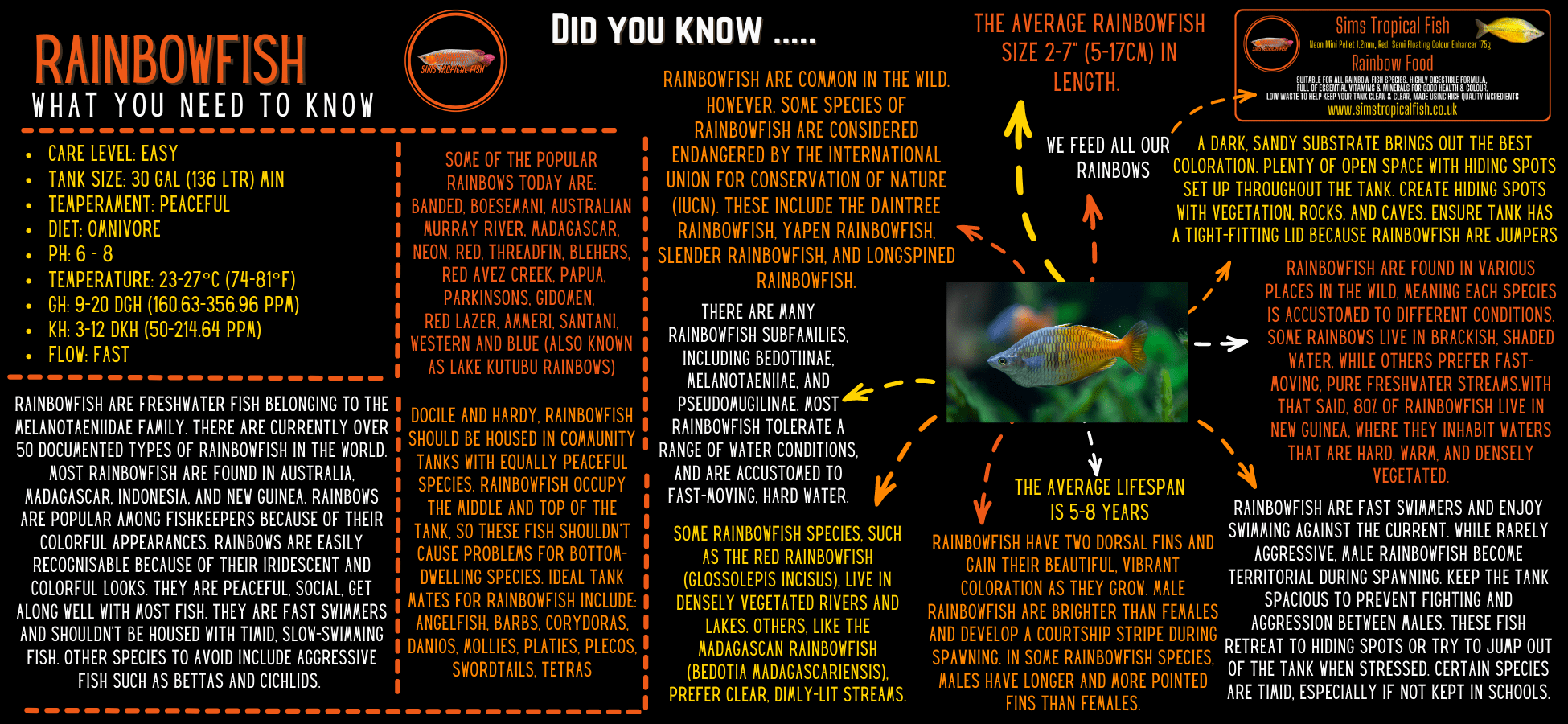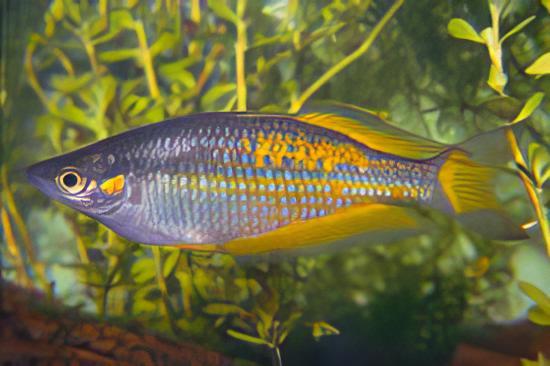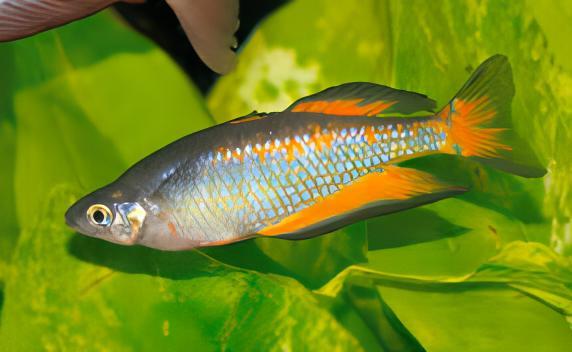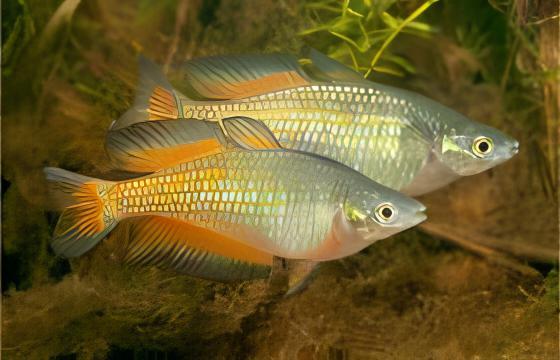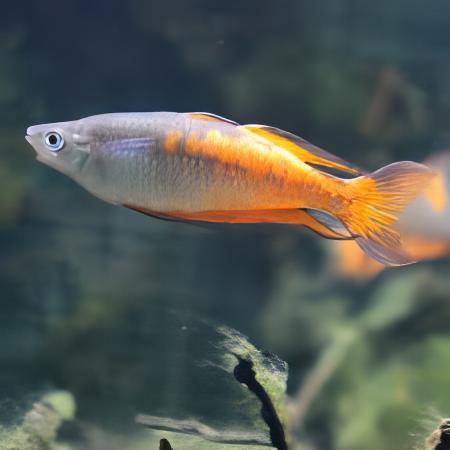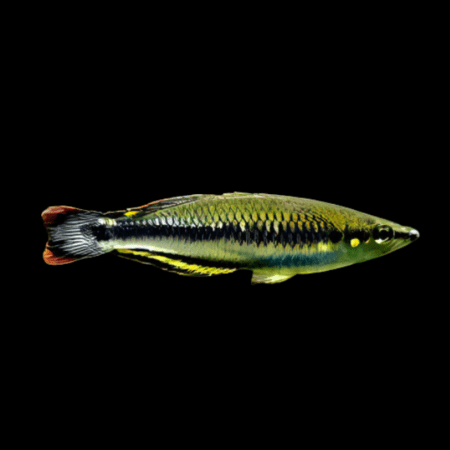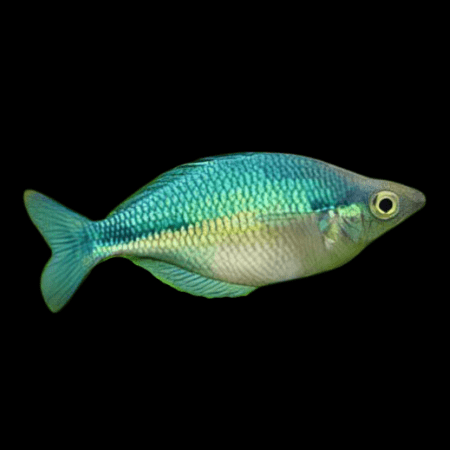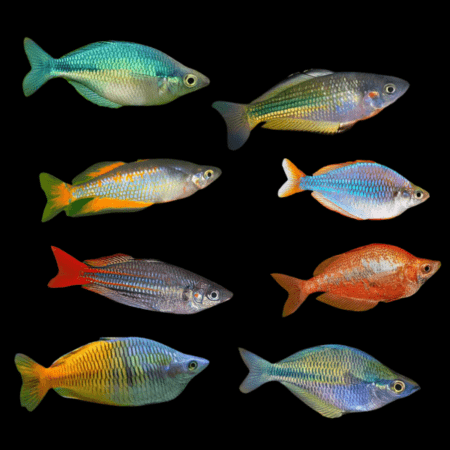Description
Parkinsoni Rainbow Fish Melanotaenia Parkinsoni
Overview
| Synonyms | None |
| Distribution | Widespread locations along the Southern coast of Eastern Papua New Guinea between the Kemp River and Milne Bay. |
| Maximum Size | 15cm (5.9″) |
| Temperature | 26-30°C |
| Water Parameters | Will acclimatise to a wide range of conditions. pH: 6.5-8.0, dH: up to 18 degrees. High O2 level required. |
| Compatibility | Community |
| Lighting | No special requirements |
| Sexual Dimorphism | Mature males much more colourful. |
| Feeding | Flake, granules and frozen foods |
Description
Care
Parkinson’s Rainbowfish are a peaceful showy species, ideally suited to good sized community aquaria. These stunning fish, with their scattering of intense natural red-orange colouration, should be maintained in groups of 6 or more due to their shoaling nature. As an active and fairly large-growing species, much swimming space is required, so it is important to house them in aquaria measuring 4ft long or larger. As with many other Rainbowfish species, the juveniles can look quite drab compared to the beautiful mature fish, and so are all too often overlooked in the shops. However, once settled into the security of the planted aquarium, these young specimens will soon begin to colour up, revealing their true adult beauty. Darker substrate and decor choices, together with areas of dense planting (along the sides and back of the aquarium) will help to intensify the colours of these fish even further. Parkinson’s Rainbowfish will not bother smaller tankmates, as their mouth/throat is too narrow to be able to swallow them. Males may spar with other males when competing for the females, although no serious damage will occur. Whilst they will acclimatise to a wide range of conditions, they will be seen at their best in slightly harder, alkaline water. Of much more importance is their need for well-filtered clean water along with high levels of oxygenation, such is their preference for relatively high temperatures. A naturally occurring yellow morph of this species is known, however, it is rarely exported.
Feeding
Flake, green flake, micropellets, and small frozen foods such as mosquito larvae and daphnia. These fish thoroughly enjoy browsing on ‘duckweed’ (Lemna minor).
Breeding
A separate good-sized breeding aquarium should be set up with 75% mature tank water and 25% of dechlorinated fresh water, along with a substrate of marbles. A small air-driven sponge filter (with a mature sponge) should be added to give gentle circulation and filtration. The temperature should be set at 28 °C. A conditioned pair should then be acclimatised across to the breeding aquarium, which should be furnished with plenty of fine-leaved plants/Java moss clumps. After a time, the male will swim in front of the female, displaying the mating stripe on his forehead. He will then begin to drive the female over the plants, utilising the whole length of the tank. The eggs will be scattered over the plants a few at a time. These fish are known as ‘continual spawners’ which means that the spawning activity takes place over several days/weeks, even months in some cases. This can present problems to the aquarist in that some adult fish may begin to consume the eggs as they are scattered. Many fishkeepers have found the eggs to be remarkably tough and have had great success in siphoning them out into another aquarium (containing matching water from the spawning tank) or else using spawning mops, which, when having caught a number of the eggs, can be moved to a separate tank (again with matching water) and replaced with a new mop, as and when each series of eggs are deposited. The eggs will usually hatch in 8-10 days (dependent on temperature) and once free-swimming, the tiny fry can be offered infusoria, moving onto larger foodstuffs as they develop.
